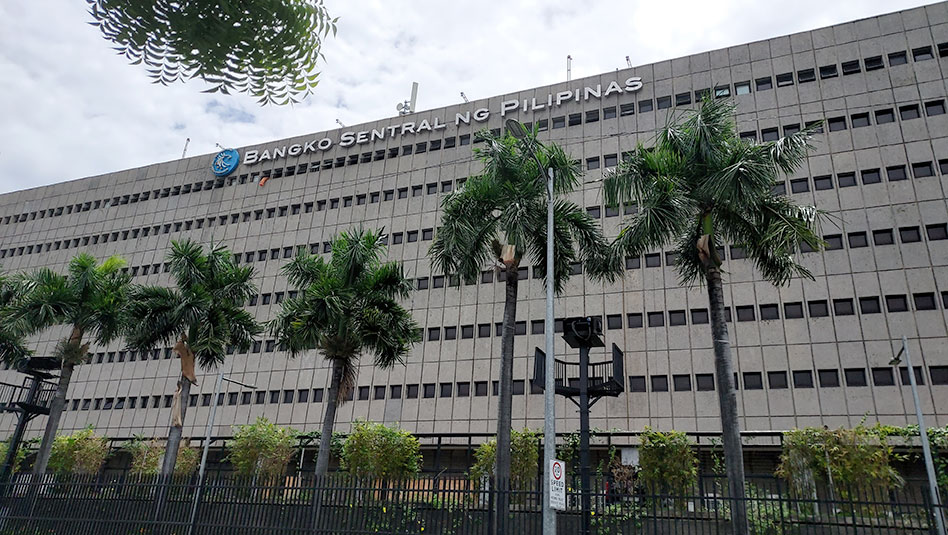




Policy Rate Updates: Closer to BSP’s Goldilocks moment
 DOWNLOAD
DOWNLOAD

Inflation Update: Speeds up but remains below target
 DOWNLOAD
DOWNLOAD

Monthly Economic Update: Fed back on track
 DOWNLOAD
DOWNLOAD


Big Philippine banks’ assets up nearly 10% in Q4

THE ASSETS of the Philippines’ largest banks grew by nearly 10% in the fourth quarter of 2022, as economic activity continued to pick up.
BusinessWorld’s latest quarterly banking report showed the combined assets of 45 universal and commercial banks (U/KBs) jumped by 9.4% to P22.51 trillion in the October-to-December period, from PHP 20.56 trillion in the same three months last year.
Asset growth quickened from the 8.38% year-on-year expansion in the third quarter of 2022 and the 8.59% in the same period in 2021.
Aggregate loans of big banks expanded by 9.73% year on year to PHP 11.14 trillion in the October-December period, faster than the 5.93% growth in the same period in 2021. However, it was nearly unchanged from the 9.74% growth in the third quarter.
The fourth quarter also saw nonperforming loans (NPLs) drop by 9.45% year on year to PHP 336.54 billion from PHP 371.65 billion in the fourth quarter of 2021.
This brought the NPL ratio, or the bad loans as a portion of the total loan portfolio, to 3.17% in the fourth quarter, higher than the NPL ratio of 2.91% in the third quarter of 2022. Year on year, the NPL ratio was an improvement from the 3.95% in the same quarter of 2021, reflecting Filipinos’ increased capacity to repay their loans.
Loans are classified as nonperforming if the principal and/or interest are unpaid for more than 90 days from contractual due date. These may pose risk to the lenders’ asset quality as borrowers are likely to default on these debts.
The big banks’ nonperforming asset (NPA) ratio — the share of NPLs and foreclosed properties to total assets — stood at 0.99% as of the quarter ending December. This was the lowest NPA ratio since 0.91% in the first quarter of 2020, when the coronavirus pandemic began.
Foreclosed real and other properties as a share of the big banks’ total assets steadied to 0.28% quarter on quarter, but higher than 0.25% in the final three months of 2021.
Meanwhile, total loan loss reserves inched up 0.34% quarter on quarter to PHP 382.54 billion in the fourth quarter. On an annual basis, this was 12.10% higher than PHP 341.23 billion in the fourth quarter of 2021.
Big banks’ median capital adequacy ratio — the ability to absorb losses from risk-weighted assets — stood at 17.97%, lower than the 19.60% in the third quarter and 21.30% year on year. This was still above the minimum of 10% set by the Bangko Sentral ng Pilipinas as well as the international minimum standard of 8% under the Basel III framework.
Profitability as the median return on equity (RoE) slightly eased to 6.36% from the preceding quarter’s 6.42%, but still higher than the RoE of 3.11% in the fourth quarter of 2021.
The RoE ratio measures the amount that shareholders make on every peso they invest in a firm, and is calculated by dividing the net profit to average capital. It also measures how well a firm makes use of the money from shareholders to generate income.
BDO Unibank, Inc. (BDO) remained the largest bank in terms of assets with PHP 4.01 trillion as of the fourth quarter. State-owned Land Bank of the Philippines (LANDBANK) came in at second with PHP 3.16 trillion, while Metropolitan Bank & Trust Co. (Metrobank) ranked third with PHP 2.92 trillion.
The Sy-led bank was also the top bank in terms of loans issued with PHP 2.53 trillion, followed by Bank of the Philippine Islands (BPI)’s PHP 1.69 trillion and Metrobank’s PHP 1.39 trillion.
Among banks with assets of at least P100 billion, Union Bank of the Philippines (UnionBank) posted the fastest year-on-year asset growth of 31.13%, followed by China Banking Corp. (27.94%), and Security Bank Corp. (25.46%).
Hongkong and Shanghai Banking Corp. Ltd. saw the quickest loan growth, with a year-on-year expansion of 70.78%, followed by Bank of Commerce (42.64%) and UnionBank (42.52%).
BDO had the most deposits with PHP 3.22 trillion, followed by LANDBANK with PHP 2.78 trillion and Metrobank with PHP 2.22 trillion.
BusinessWorld Research has been tracking the financial performance of the country’ big banks on a quarterly basis since the late 1980s using banks’ published statements. – Lourdes O. Pilar, Researcher
This article originally appeared on bworldonline.com





 By BusinessWorld
By BusinessWorld
